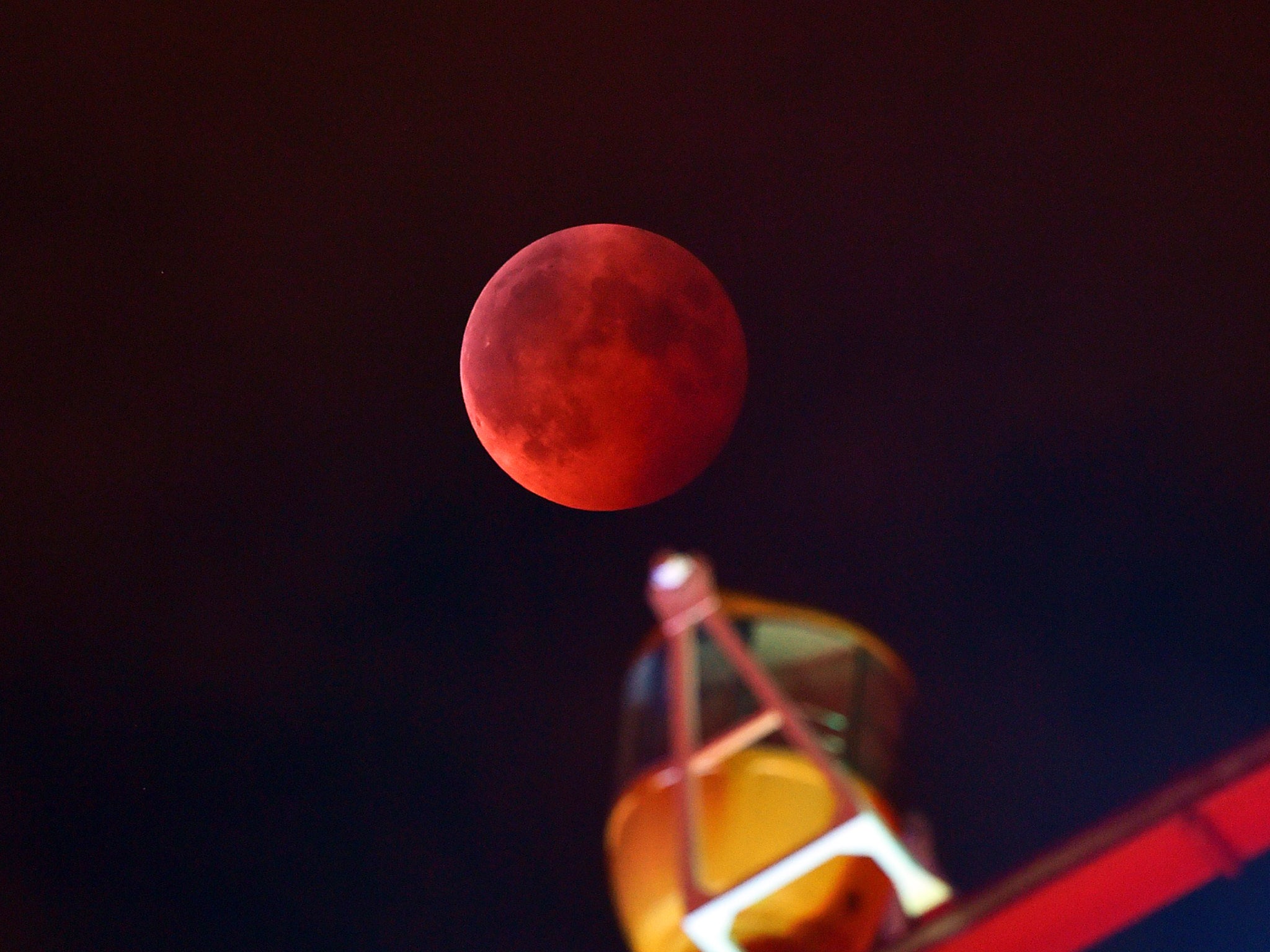Lunar eclipse: Earth to block out the sun and turn the moon red this weekend
Australia, East Asia and the east coast of America will get the best view

Your support helps us to tell the story
From reproductive rights to climate change to Big Tech, The Independent is on the ground when the story is developing. Whether it's investigating the financials of Elon Musk's pro-Trump PAC or producing our latest documentary, 'The A Word', which shines a light on the American women fighting for reproductive rights, we know how important it is to parse out the facts from the messaging.
At such a critical moment in US history, we need reporters on the ground. Your donation allows us to keep sending journalists to speak to both sides of the story.
The Independent is trusted by Americans across the entire political spectrum. And unlike many other quality news outlets, we choose not to lock Americans out of our reporting and analysis with paywalls. We believe quality journalism should be available to everyone, paid for by those who can afford it.
Your support makes all the difference.Early Saturday morning, the Earth will move between the moon and the sun, completing one of the shortest lunar eclipses in recent history.
The event, which will be total for just under five minutes, will be most easily visible for those in Australia and East Asia on Saturday night. The east of America will also get some chance to spot it, with it getting less spectacular towards the west of the country.
The eclipse is the third in a tetrad of lunar eclipses, made up of four in a series that began in April last year and will end in September. As such, some have seen the event as deeply significant — the tetrad could be a sign from God, some Christian pastors have said, and may even be a message that judgment is coming.
But for most of the people that see the eclipse, it will be at least initially visible by making the moon turn a deep red. The red colour comes from Rayleigh scattering — which also accounts for the deep red of sunsets and is caused by the way light is scattered as it travels through space. The colouring sometimes leads to lunar eclipses being called a “blood moon”.
The redness will be most visible towards the bottom of the moon, which will be closest to the shadow cast by the Earth.
The event will begin at about 3.16am pacific time on Saturday morning in the local time zone, or 6.16pm on Friday evening UK time. It will continue for an hour and 45 minutes, but it is in the middle of that time that the eclipse will be total.
For those in the UK and elsewhere that won’t be able to see it, Nasa’s Marshall Space Flight Center will be providing a livestream of the event. The center will also be taking questions during the event and before on its Twitter feed.
Join our commenting forum
Join thought-provoking conversations, follow other Independent readers and see their replies
Comments